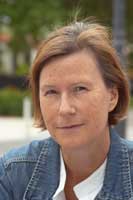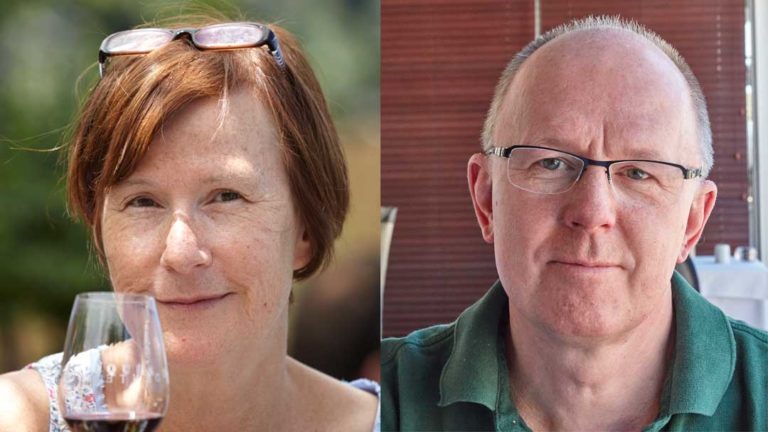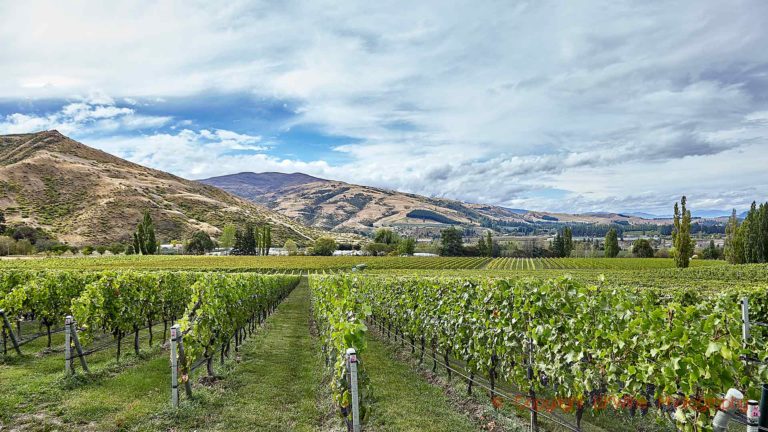
–– The newsletter on wine and wine travel ––
–– Read by wine lovers and wine professionals all over the world ––
–– On the internet since 1996 ––
Minerality, the Swiss Army knife for the taste of wine?
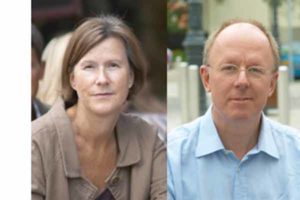 Sometimes the spell check program tells you that the word you have used in a text is “overused” and that you should “consider using another word”. This is often a good observation. A varied choice of words makes a text more interesting to read. There is a special place for “minerality” and everything that has to do with minerals in that recommendation. Everyone seems to use “minerality”, and no one seems to agree on what it means.
Sometimes the spell check program tells you that the word you have used in a text is “overused” and that you should “consider using another word”. This is often a good observation. A varied choice of words makes a text more interesting to read. There is a special place for “minerality” and everything that has to do with minerals in that recommendation. Everyone seems to use “minerality”, and no one seems to agree on what it means.
Since the word “minerality” was introduced in the wine tasting vocabulary perhaps around 15 years ago, there has been an unparalleled focus on minerals. In older wine books, the word does not exist. Producers, wine tasters and not least marketers now use the term indiscriminately. Every other wine that I read about is described with the word mineral in some form. It can be “touch of minerality”, “integrated backbone of minerals”, “calcareous minerals”, “austere minerality”. I have been most puzzled by “floral minerality” and “creamy minerality”.
It is no longer just chablis, champagne and the occasional riesling that are given the epithet. Now people give it to both white and red wines, in different styles and price ranges.
There is inflation in minerality.
Strictly speaking, minerals can be two things. Minerals are, in the geological sense, rocks such as limestone, granite, basalt, schist, etc. Basically, any kind of rock. It can also be a mineral in the sense of nutrients, such as iron, magnesium, phosphorus, etc. Both are important for vines and wine lovers alike. But that mineral means two different things, makes it complicated.
When we read that wines come from soils with “lots of minerals”, “interesting minerals”, “rich in minerals”, etc., we can probably assume that the writer mean the nutrients, although it is often not clear what the writer actually means. Mineral nutrients nourish the vine. To say that the soil contains lots of minerals is another way of saying that it is nutritious. A soil rich in minerals is nutrient-rich soil. The vine does not have to go hungry. To say “a poor but mineral-rich soil” doesn’t make much sense.
But there is a third use, the one that this text is really about: mineral or minerality as a taste descriptor. Used as a wine tasting term, it is probably more the geological meaning of the word that is in the mind of the taster. Probably. It is hard to believe that they mean that the wine tastes like phosphorus and magnesium. It is more likely (although it sounds strange), that they mean that the wine tastes like granite or slate.
But rocks and minerals have no taste.
The word is, of course, a metaphor for something. I have asked people what they mean by minerality. Some say saltiness (although it is highly unusual to find salt in wine), others say freshness, wet stones, flint. Maybe they see rocks, cliffs, the big Ocean in front of them when they drink certain wines. Perhaps they sense something cool, crispy, steely. But how does that fit with floral or creamy minerality?
Maybe minerality means a particular stringency in the wine, an opposite of softness? Something that lifts the wine and gives it vitality. Perhaps the reader will be none the wiser by that description. And maybe minerality means something entirely different for some. So, how should you interpret the word “minerality”?
Personally, I (Britt) have stopped using the word. I want the reader to get an understanding of what I mean.
This month’s Brief is about the climate, among other things. About how climate change is positive for some. About how the climate can cause significant problems (with cold frosty nights). How the climate has given a good quality harvest in 2021 (in the southern hemisphere).
About the brand-new German wine law. A new grape profile (sauvignon blanc). About different kinds of yeast. And a few producers who make excellent wines.
And much more.
Spring is in the air, and the warm weather is on its way. Life will improve even more as people get their vaccines.
Are you longing for a tour in the vineyards? Longing to visit a wine region and enjoy outstanding wines and good food?
Then we are here for you. Two of the world’s most experienced wine tour organisers. We have planned an inspiring tour program for the autumn and the beginning of 2022. We hope you will get in touch as soon as you feel the urge to go on a wine tour.
Travel to the world’s wine countries with BKWine. You will not find a better cicerone among the vines.
More about the wine tours in the Brief.
Enjoy the Brief!
Britt & Per
If you appreciate what we do, you can help us:Tell your friends about the Brief or send it to them.
Like us and follow us on social media:
What’s on at BKWine Tours
BKWine is also one of the world’s leading wine tour operators. Here’s what we currently have on our scheduled wine tour program:
- Champagne and Bordeaux, September 23 – October 1 2021
- Champagne, September 23-27, 2021
- Bordeaux, September 27 – October 1, 2021
- Chile-Argentina, January 17-30, 2022
- South Africa, February 9-18, 2022
- New Zealand, March 10-25, 2022
We also make custom designed wine tours.
We’re different than most other wine tour operators. We are people who know wine inside out, who travel constantly in wine regions, who write award winning books about wine. Who do this out of passion. Our tours are different from others. More in wine tours: BKWineTours.com.
Read our booksWe have written several wine books, ten at the last count. Unfortunately, only one of them has been translated to English; the others are (so far) only available in Swedish. This is the one that is available in English: All our books are on wine, but on different subjects: wines of the Languedoc, wine growing and wine making, the wines of France, Tuscany, Bordeaux, Piedmont, Burgundy, Champagne. Several have won prestigious prizes and awards from Gourmand International, OIV and others. Read more on our wine books. |
News from the world of wineWhat’s been happening in the world of wine recently. |
The effects of climate change in Champagne are, so far, positive
But Champagne is, of course, aware of the fact that in the end, the consequences will no longer be favourable. Champagne invests heavily in sustainability. In 2003, the region adopted an ambitious climate plan to reduce carbon dioxide emissions by 75% by 2050. You can already see the first results. The emissions that each champagne bottle accounts for have decreased by 20% in 15 years. Reducing the weight of the champagne bottle, recycling waste, and biomass conversion are among the most important initiatives. The packaging accounts for a third of the entire production process’s emissions in Champagne. Read more: Champagne Climate Change Adaption. Travel: Go on a wine tour to Champagne with BKWine. |
Harvest report 2021 from Argentina
“2021 was a very cold and rainy vintage. I think it is a very good vintage for my style, low pH, low alcohol, with good maturity, not bad!” says Juanfa Suarez at Finca Suarez in Valle de Uco. Constanza Pimentel at Bodega Caelum in Lujan de Cuyo agrees. “This year has been great in terms of quality in our case particularly. We have experienced low yields naturally, though, especially for the malbec. This means that we had a natural “green harvest”. Hubert Weber, winemaker at Bodegas y Cavas Weinert in Lujan de Cuyo says “the whites and rosés are very promising, with a lot of fruit and nice structure. Reds are also promising, but with more variation in quality. Fruit, colour and structure are good to very good, just need to see what the capacity of ageing of the tannic structure of the wines will be.” A strange thing happened this year in one malbec vineyard, Hubert tells us. 80% of the grapes were eaten by birds within a few days. He had never seen that happen in Mendoza since he came here, and that was 25 years ago (the only place we know that has major problems with birds eating grapes is New Zealand, although it does occur in some other countries too). Travel: Go on a wine tour to Argentina and Chile with BKWine. |
What to drink with spring vegetables or around the barbecue?
Creation Reserve Chardonnay 2019, Walker Bay, South Africa, ~15 euro. Oak fermentation with batonnage gives a good body while maintaining freshness. From a cool climate region on the south coast of South Africa. Creation is a great chardonnay specialist. François 1er Vieilles Vignes 2017, Domaine Des Huards, AOP Cour-Cheverny, Loire Valley, ~18 euro. The grape is romorantin, unique to this appellation close to two of the most beautiful Loire chateaux. Full-bodied with apricot aromas and lovely honey notes. Guímaro Blanco 2019, Ribeira Sacra, Galicia, Spain, ~12 euro. Spain has so much to discover and gets so little attention compared to Italy and France. Galicia by the Atlantic coast makes some superb wines. Here, the grape is godello, and with its fresh citrus flavours, it will go very well with a grilled fish. Keermont Terrasse 2017, Stellenbosch, South Africa, ~15 euro. Chenin blanc is the main grape in this oak barrel-fermented wine. Chardonnay gives body and sauvignon blanc and viognier an attractive spiciness A delicious combination. Granito Semillon 2019, J. Bouchon, Maule, Chile, ~20 euro. It is unusual to come across semillon outside of Bordeaux. This intensely flavourful wine comes from 80-year-old vines in Chile. |
Sweden, the winner of climate change, in French wine magazine
He talks about the grapes, which to a large extent are resistant hybrids, developed in Germany. Solaris is the most common grape for white wine. Rondo is a widespread red wine grape. But chardonnay, riesling, cabernet franc, merlot and pinot noir are also planted. At present, the Swedish vine surface is estimated at 100 hectares. With its 14 hectares, Kullabergs Vingård is one of the larger wineries. “We would like to double our surface to 30 hectares,” says Felix. “But climate change is also risky. We will probably have more ‘weather accidents’ such as hail, drought or heavy rainstorms.“ Read the interview with K Felix G Åhrberg here. |
The Loire Valley attracts young winegrowers
35% of buyers in the Loire are young winegrowers. 35% are what are called néo-vignerons, people who already have a, often successful, career behind them. In Provence, for example, young people account for only 14% of purchases, while the néo-vignerons account for 60%. Read more: anjou-agricole. |
Cold April nights with frost cause great havoc in the vineyards
In Champagne, it is estimated that 25-30% of the buds have been destroyed. In the Rhône Valley, it is believed to be 30-60%. It varies between different regions and different producers, but virtually all French regions are affected, to a greater or lesser extent. The French Prime Minister has promised financial support. There are great uncertainties in how much effect it will have on the harvest quantity. To some extent, the frozen vines can recover, but they will hardly bear useful fruit. But if the weather is good the rest of the season, plentiful grapes in undamaged areas can to some extent compensate for the losses. I guess many regret (for example in Champagne) that they artificially limited last year’s harvest, which otherwise could have been abundant. You can try to protect yourself in different ways: burn candles or gas fires, spray water, burn hay bales, fly by helicopter, use a propeller tower, cover with tarpaulin, heat with electric cable etc. But all is expensive. |
Mouton Cadet, 14 million bottles of sustainable wine
Not all subcontractors are organically certified, but Baron Philippe de Rothschild SA, which owns Mouton Cadet, also invests heavily in sustainability. All Mouton Cadet bottles are produced without CMR pesticides (carcinogenic, mutagenic and reproductive) and all its partners are certified HVE, Haute Valeur Environnementale, a French sustainability label. Reducing the use of herbicides and synthetic pesticides are ongoing. Do we need to mention that Mouton Cadet is not Chateau Mouton Rothschild’s second wine, as some marketing implies? It did indeed start its life as Mouton’s second wine in 1930. The success was immediate, and after only a few years, the chateau had to start buying grapes. Mouton Rothschild’s second wine is called Le Petit Mouton and given the price difference, all confusion with Mouton Cadet is impossible. Read more: LaRVI Travel: Go on a wine tour to Bordeaux with BKWine. |
FeaturesArticles and features published on BKWine Magazine and on our wine travel blog and photography blog in the last month. |
Wines from the west side of the Rhône: Domaine Marie Blanche and Domaine Mas des Volques
Read more in Britt’s article on BKWine Magazine: Wines from the west side of the Rhône: Domaine Marie Blanche and Domaine Mas des Volques. |
Bone-dry riesling and more from cool-climate Finger Lakes, with a focus on sustainability | Britt on Forbes
Read more in Britt’s article on BKWine Magazine, also published on Forbes: Bone-dry riesling and more from cool-climate Finger Lakes, with a focus on sustainability | Britt on Forbes. |
Explained: The European wine classification system, AOP, DOC, PGI, PDO etc
Read more in Per’s article on BKWine Magazine: The European wine classification system, AOP, DOC, PGI, PDO etc. |
Sauvignon blanc, aromatic, popular and more multifaceted than you think | Grape Variety Profile | Britt on Forbes
A new article in our series on grape varieties. Read more in Britt’s article on BKWine Magazine, also published on Forbes: Sauvignon blanc, aromatic, popular and more multifaceted than you think | Grape Variety Profile | Britt on Forbes. Travel: Travel to the country with the highest portion of sauvignon blanc, wine tour to New Zealand. |
No wine without yeast, but which type of yeast is the best? | Britt on Forbes
Read more in Britt’s article on BKWine Magazine, also published on Forbes: No wine without yeast, but which type of yeast is the best? | Britt on Forbes. |
Germany introduces a wine hierarchy based on geography
Read more in Per’s article on BKWine Magazine, also published on Forbes: The new German wine classification | Per on Forbes. |
Tenute Ólbios, wines from Sardinia with plenty of character | Britt on Forbes
Read more in Britt’s article on BKWine Magazine, also published on Forbes: Tenute Ólbios, wines from Sardinia with plenty of character | Britt on Forbes. |
Wine ToursSome information on our current and future wine tours. Book a wine tour with the “world’s top wine tour operator” today (or when you feel like travelling to wine country). |
Champagne, learn more through many wine tasting and enjoy the gastronomy | wine tour
You will learn a lot on this wine tour, including the champagne production process and why and how it differs from other sparkling wines. You will have the opportunity to taste the many different styles of champagne; you will see the differences and maybe discover which kind you like the best. During our meals together, you will find how easy it is to combine champagne with food. We hope to see you in Champagne. Wine tour to Champagne, September 23-27, 2021 We also offer a combined Champagne and Bordeaux wine tour. See more on this in a separate note. Book your tour to now! |
Bordeaux, magnificent barrel cellars, top quality gastronomy, famous chateaux | wine tour
You will have the opportunity to admire several barrel cellars on our tour and also beautiful chateaux and charming vineyard landscapes. During our tastings, we will discuss, among other things, the ageing in oak and, also important in Bordeaux, the continued ageing in the bottle. Wine tour to Bordeaux, September 27 – October 1 We also offer a combined Bordeaux and Champagne wine tour. See more on this in a separate note. Book your tour to now! |
Champagne and Bordeaux combined: the two most famous French wine regions in one great package | wine tour
Champagne and Bordeaux are both wine regions that have been known and appreciated for more than 300 years. Champagne was not sparkling to start with. Actually, the legendary Dom Perignon tried his best to make a high-quality still wine. Some of the famous chateaux of Bordeaux appeared as early as the 18th century. There is a lot of history in these regions. But they are also forward-looking, and we see significant investments in sustainable viticulture and winemaking today. We will have some interesting discussions, not least while we enjoy gastronomic lunches, some of them at champagne houses and Bordeaux chateaux. Join us and discover two unique and classic French wine regions. Wine tour to Champagne and Bordeaux, September 23 – October 1, 2021. Book your tour to now! |
Abundant sun, exciting conversations with winemakers, coastal landscapes, high mountains, and local gastronomy | wine tour in South America
Our days are filled with wine tastings, gorgeous lunches, exciting conversations with winemakers. We inspect the vineyards and the grapes that are just about to finish their ripening period. We will see much of the landscape in both countries. We visit Buenos Aires, Santiago and Valparaiso. We will stay in the pleasant city of Mendoza, in charming Santa Cruz and Viña del Mar at the coast. It is summertime, and the weather is warm and sunny. Join us on our tour to South America and experience its incredible wines and wineries. Wine tour to Chile-Argentina, January 17-30, 2022. Book your tour to South America now! |
Chenin blanc, incredible sceneries, creative winemakers, unforgettable lunches | wine tour in South Africa
The South African wine regions are all located in the Western Cape, at a relatively short distance from Cape Town. We start our tour there, and then we go on to the south coast, to Walker Bay, further up to Franschhoek and Swartland, and we end in Stellenbosch. These regions will give us a good idea of what is happening in South Africa’s wine industry today. We will get to know the local gastronomy, quite diverse and very exciting, and we will have some superb lunches and dinners together. We will also have time to enjoy the landscape and the occasional sunset by the sea. Wine tour to South Africa, 9-18 February 2022. Book your tour to South Africa now! |
From Auckland in the north to Queenstown in the south with wine, food and incredible landscapes in-between | wine tour in New Zealand
Our bus will take us from Auckland down to Queenstown on the South Island, so we will have plenty of time to enjoy the varied landscape. The three-hour trip by boat from the North Island to the South Island is an experience, maybe there will be dolphins. We make a detour to the country’s highest mountain, snow-covered Mount Cook. But the wine is the centre-piece, along with the local gastronomy, such as lamb, seafood, salmon and more. Welcome to discover this new wine country. An adventure that you will never forget. Wine tour to New Zealand, March 10-25, 2022. Book your tour to New Zealand now! |


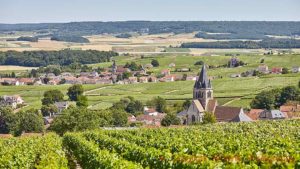 How noticeable is climate change in the vineyard? The consequences are already visible and are positive for the quality of the must, says the producer association Comité Champagne (CIVC). In Champagne, for the past 30 years, the harvest starts earlier, on average 18 days earlier. The temperature has increased by 1.3 degrees C on average compared to the previous 30-year period (1961–1990). The total acidity has decreased by 1.95 grams per litre, and the natural alcohol content has increased by 0.7%. The frost damage has increased slightly even though the number of frosty nights has decreased due to earlier budding.
How noticeable is climate change in the vineyard? The consequences are already visible and are positive for the quality of the must, says the producer association Comité Champagne (CIVC). In Champagne, for the past 30 years, the harvest starts earlier, on average 18 days earlier. The temperature has increased by 1.3 degrees C on average compared to the previous 30-year period (1961–1990). The total acidity has decreased by 1.95 grams per litre, and the natural alcohol content has increased by 0.7%. The frost damage has increased slightly even though the number of frosty nights has decreased due to earlier budding.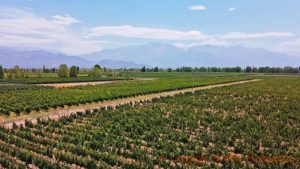 The OIV, International Organization of Vine and Wine, recently presented the first impressions of the 2021 harvest for the southern hemisphere. Argentina made a total of 10.1 million hl (preliminary figure, as the harvest has just finished). This is a decrease of 6.4%, due to frost in October 2020 and a number of hailstorms, 28 to be exact, according to the OIV. We asked some of our favourite producers about their impression of the harvest.
The OIV, International Organization of Vine and Wine, recently presented the first impressions of the 2021 harvest for the southern hemisphere. Argentina made a total of 10.1 million hl (preliminary figure, as the harvest has just finished). This is a decrease of 6.4%, due to frost in October 2020 and a number of hailstorms, 28 to be exact, according to the OIV. We asked some of our favourite producers about their impression of the harvest. Here are some suggestions or inspiration for white wines to drink with your primeurs vegetables or when enjoying the spring season barbecues.
Here are some suggestions or inspiration for white wines to drink with your primeurs vegetables or when enjoying the spring season barbecues.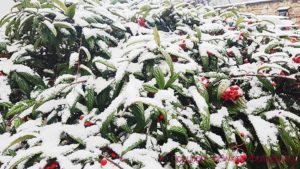 Climate change is having an impact on the global wine geography, says the French wine magazine Mon Viti. There are losers and winners, and one of the winners is Sweden. They take, as an example, the Swedish winery Kullabergs Vingård in Skåne. They have interviewed its owner K Felix G Åhrberg, who starts by assuring the French that it is not freezing cold everywhere in Sweden. Vines are grown in the southern part of the country, far from polar temperatures, mainly along coastal regions, he says. “We have hardly any snow and no harsh temperatures in the winter; the summers are quite dry, but the biggest problem remains, the early spring frosts, as elsewhere.”
Climate change is having an impact on the global wine geography, says the French wine magazine Mon Viti. There are losers and winners, and one of the winners is Sweden. They take, as an example, the Swedish winery Kullabergs Vingård in Skåne. They have interviewed its owner K Felix G Åhrberg, who starts by assuring the French that it is not freezing cold everywhere in Sweden. Vines are grown in the southern part of the country, far from polar temperatures, mainly along coastal regions, he says. “We have hardly any snow and no harsh temperatures in the winter; the summers are quite dry, but the biggest problem remains, the early spring frosts, as elsewhere.”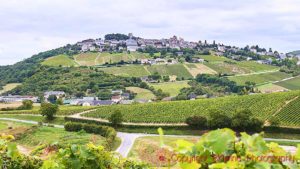 More than twice as many young winegrowers have settled in the Loire Valley in recent years, compared to the Rhône, Bordeaux and Provence, which is actually not strange. The prices are probably a big reason. The average of 20,000 euros per hectare is in a completely different price range than many other French wine regions. The Loire Valley does not attract large, mega-rich investors. And the wine estates are generally small. One-third of the estates sold in the Loire are less than 15 hectares.
More than twice as many young winegrowers have settled in the Loire Valley in recent years, compared to the Rhône, Bordeaux and Provence, which is actually not strange. The prices are probably a big reason. The average of 20,000 euros per hectare is in a completely different price range than many other French wine regions. The Loire Valley does not attract large, mega-rich investors. And the wine estates are generally small. One-third of the estates sold in the Loire are less than 15 hectares.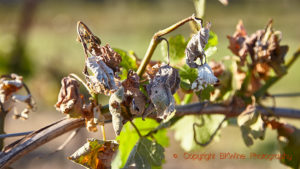 Wine producers in France and other parts of Europe were hit hard by several cold nights in April with temperatures far below zero. The warm temperatures earlier this spring had led to early budding in many places, and when the frost hit (unusually severe frost), the devastation was significant, despite the measures taken. The financial losses will be considerable, although it is impossible at the moment to say exactly how much of the future harvest is lost.
Wine producers in France and other parts of Europe were hit hard by several cold nights in April with temperatures far below zero. The warm temperatures earlier this spring had led to early budding in many places, and when the frost hit (unusually severe frost), the devastation was significant, despite the measures taken. The financial losses will be considerable, although it is impossible at the moment to say exactly how much of the future harvest is lost.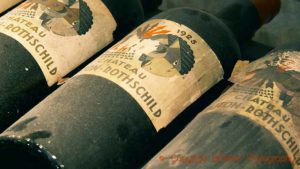 We certainly like small organic and sustainable producers, but for the overall result, it is essential that also the big ones make commitments. Therefore, it is a good thing that Mouton Cadet is now launching its Mouton Cadet Rouge Bio, which in addition to being organic, is bottled in a lighter bottle with a label of recycled paper. Every year, 14 million bottles of Mouton Cadet are sold worldwide. The grapes come from growers all around the region of Bordeaux, from just over 1,500 hectares.
We certainly like small organic and sustainable producers, but for the overall result, it is essential that also the big ones make commitments. Therefore, it is a good thing that Mouton Cadet is now launching its Mouton Cadet Rouge Bio, which in addition to being organic, is bottled in a lighter bottle with a label of recycled paper. Every year, 14 million bottles of Mouton Cadet are sold worldwide. The grapes come from growers all around the region of Bordeaux, from just over 1,500 hectares. We have recently had the opportunity to taste wines from two excellent producers in the southern Rhône Valley that we were not familiar with before: Domaine Mas des Volques in the appellation of Duché d’Uzès and Domaine Marie Blanche in the Côtes du Rhône Villages appellation. Both are situated west of the river Rhône, the side towards the Massif Central, an unexplored part of the southern Rhône valley compared to the more famous districts east of the river.
We have recently had the opportunity to taste wines from two excellent producers in the southern Rhône Valley that we were not familiar with before: Domaine Mas des Volques in the appellation of Duché d’Uzès and Domaine Marie Blanche in the Côtes du Rhône Villages appellation. Both are situated west of the river Rhône, the side towards the Massif Central, an unexplored part of the southern Rhône valley compared to the more famous districts east of the river. Everyone knows Californian wines and probably also Washington and Oregon wines. But the fact is that most states in the United States, perhaps even all of them, make wine. One of the most important, after these three already mentioned, is New York. In the northern part of the state, on the border with Canada, is Finger Lakes. The region is on its way to fame to the delight of all lovers of cool climate wines. We taste three elegant Finger Lake wines and the three producers talk about the future of the wine region.
Everyone knows Californian wines and probably also Washington and Oregon wines. But the fact is that most states in the United States, perhaps even all of them, make wine. One of the most important, after these three already mentioned, is New York. In the northern part of the state, on the border with Canada, is Finger Lakes. The region is on its way to fame to the delight of all lovers of cool climate wines. We taste three elegant Finger Lake wines and the three producers talk about the future of the wine region. In 2009 the EU implemented a wine reform that structured wine in a few different groups. The intention was, and is, to harmonise the different systems that exist in the member countries. How this has then been implemented in local legislation and nomenclature varies from country to country. The legislation is primarily made to protect products of geographical origin. It is referred to as the “quality scheme” in the EU documents although it is not really about quality. Here’s a very short and schematic overview of how it looks.
In 2009 the EU implemented a wine reform that structured wine in a few different groups. The intention was, and is, to harmonise the different systems that exist in the member countries. How this has then been implemented in local legislation and nomenclature varies from country to country. The legislation is primarily made to protect products of geographical origin. It is referred to as the “quality scheme” in the EU documents although it is not really about quality. Here’s a very short and schematic overview of how it looks.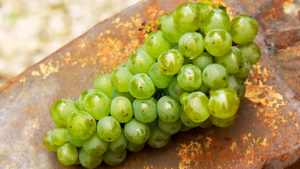 Sauvignon blanc is a popular grape. It has increased enormously in the last 20 years. A dozen countries have significant plantings, and another ten have a smaller, but growing, surface. Sauvignon blanc grows best in a slightly cooler climate. It often has an aromatic and straightforward character. But it is more complex than you might think. In fact, it can produce world-class wines, if you know where to look.
Sauvignon blanc is a popular grape. It has increased enormously in the last 20 years. A dozen countries have significant plantings, and another ten have a smaller, but growing, surface. Sauvignon blanc grows best in a slightly cooler climate. It often has an aromatic and straightforward character. But it is more complex than you might think. In fact, it can produce world-class wines, if you know where to look.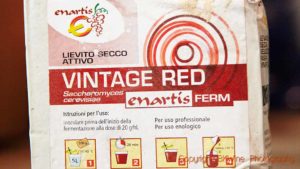 Making wine is pretty straightforward. Or rather, it was, once upon a time. Today it is more complicated. The fermentation, not least, requires the winegrowers to think carefully. They know that yeast turns the sugar in the grapes into alcohol, that stays in the wine, and to carbon dioxide that dissipates. They also know that yeast is found on the grape’s skin and in varying quantities around the vineyard and the wine cellar. But the big question is: can they trust this yeast? Or, should they instead choose a safer route and buy cultured yeast of the most common species, Saccharomyces cerevisiae, propagated in a laboratory? And thus gain more control over what happens during the fermentation and a more secure end-result?
Making wine is pretty straightforward. Or rather, it was, once upon a time. Today it is more complicated. The fermentation, not least, requires the winegrowers to think carefully. They know that yeast turns the sugar in the grapes into alcohol, that stays in the wine, and to carbon dioxide that dissipates. They also know that yeast is found on the grape’s skin and in varying quantities around the vineyard and the wine cellar. But the big question is: can they trust this yeast? Or, should they instead choose a safer route and buy cultured yeast of the most common species, Saccharomyces cerevisiae, propagated in a laboratory? And thus gain more control over what happens during the fermentation and a more secure end-result?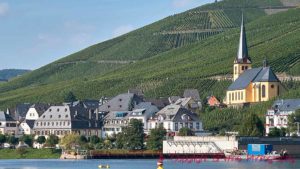 Germany has introduced a new “classification” system for its wines, under the name Qualitätswein. It creates a hierarchy of wines – Area, Region, Village and Vineyard – with increasingly smaller units. It is assumed that “smaller is better”. The existing system with Prädikat will remain in place. The two will work in parallel. We explain the details of the new German geographic quality wine system and how it will work together with the existing system.
Germany has introduced a new “classification” system for its wines, under the name Qualitätswein. It creates a hierarchy of wines – Area, Region, Village and Vineyard – with increasingly smaller units. It is assumed that “smaller is better”. The existing system with Prädikat will remain in place. The two will work in parallel. We explain the details of the new German geographic quality wine system and how it will work together with the existing system. Suddenly everyone is talking about wines from Sardinia, the beautiful Italian island in the middle of the Mediterranean. We have tasted wines from Tenute Ólbios, a family-owned winery on the north-eastern part of the island. The white wines are magnificent. The island’s white grape vermentino is a big star. The reds are made mainly from grenache, locally called cannonau.
Suddenly everyone is talking about wines from Sardinia, the beautiful Italian island in the middle of the Mediterranean. We have tasted wines from Tenute Ólbios, a family-owned winery on the north-eastern part of the island. The white wines are magnificent. The island’s white grape vermentino is a big star. The reds are made mainly from grenache, locally called cannonau.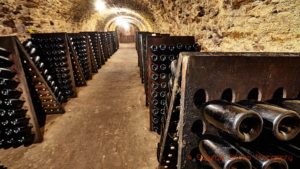 Champagne is close to Paris, but the landscape changes as soon as you approach the vineyards. From being flat agricultural land, it turns into a pretty wine region with vineyard on slopes and quaint villages. The city of Reims in the north overlooks the Montagne de Reims, the Reims Hill. The legendary town of Epernay sits peacefully on the banks of the River Marne.
Champagne is close to Paris, but the landscape changes as soon as you approach the vineyards. From being flat agricultural land, it turns into a pretty wine region with vineyard on slopes and quaint villages. The city of Reims in the north overlooks the Montagne de Reims, the Reims Hill. The legendary town of Epernay sits peacefully on the banks of the River Marne. One typical feature of the Bordeaux wine region is the magnificent barrel cellars. All the grand châteaux have one, as many Bordeaux wines spend a year or two in oak before being bottled. The oak barrel industry – cooperage – is huge in France, not only in Bordeaux but also in Cognac and Burgundy. The oak adds structure and aromas to the wine. A high-quality Bordeaux would not be the same without oak. Today, however, the producers go to great length to attenuate the aromatic impact of the oak and instead highlight the terroir and the grape.
One typical feature of the Bordeaux wine region is the magnificent barrel cellars. All the grand châteaux have one, as many Bordeaux wines spend a year or two in oak before being bottled. The oak barrel industry – cooperage – is huge in France, not only in Bordeaux but also in Cognac and Burgundy. The oak adds structure and aromas to the wine. A high-quality Bordeaux would not be the same without oak. Today, however, the producers go to great length to attenuate the aromatic impact of the oak and instead highlight the terroir and the grape.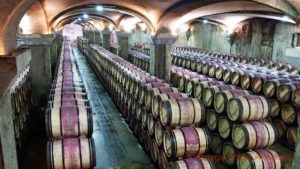 It can be hard to choose between going to Bordeaux or to Champagne. So why not go to both of them? We offer a tour that combines these two regions during a fabulous 9-day tour. We start with four nights in Reims, the big city of Champagne, and we go on to Bordeaux, where we will also stay four nights.
It can be hard to choose between going to Bordeaux or to Champagne. So why not go to both of them? We offer a tour that combines these two regions during a fabulous 9-day tour. We start with four nights in Reims, the big city of Champagne, and we go on to Bordeaux, where we will also stay four nights.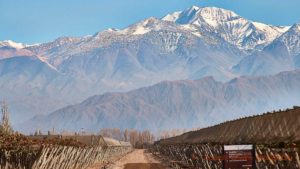 In a dry climate like Mendoza (Argentina), irrigation is vital for the vines. The mighty snow-capped Andes contribute its water and are also a magnificent backdrop for the vineyards. Chile is on the other side of the mountains. But as you will notice, the wines are entirely different. The most important red grape in Argentina is malbec. In Chile, cabernet sauvignon is the most planted variety. But there is much more, not least carmenère, Chile’s national grape. And both countries make exciting white wines.
In a dry climate like Mendoza (Argentina), irrigation is vital for the vines. The mighty snow-capped Andes contribute its water and are also a magnificent backdrop for the vineyards. Chile is on the other side of the mountains. But as you will notice, the wines are entirely different. The most important red grape in Argentina is malbec. In Chile, cabernet sauvignon is the most planted variety. But there is much more, not least carmenère, Chile’s national grape. And both countries make exciting white wines.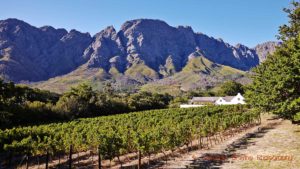 The white chenin blanc is the most widely planted grape in South Africa. They have always made a lot of white wine here, one reason being that they had a significant brandy industry. Today, not so much chenin is distilled. Instead, it is used for some of the country’s best wines. South Africa has discovered this grape’s potential and thus has also stopped calling the grape by its synonym steen, as they did before. Many other grapes have been rediscovered in South Africa by creative winemakers who want to give wine lovers unusual and exciting experiences.
The white chenin blanc is the most widely planted grape in South Africa. They have always made a lot of white wine here, one reason being that they had a significant brandy industry. Today, not so much chenin is distilled. Instead, it is used for some of the country’s best wines. South Africa has discovered this grape’s potential and thus has also stopped calling the grape by its synonym steen, as they did before. Many other grapes have been rediscovered in South Africa by creative winemakers who want to give wine lovers unusual and exciting experiences.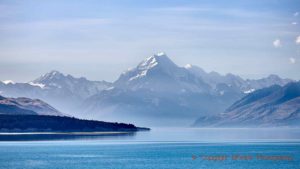 New Zealand is a country that is almost everywhere affected by the proximity to the sea. The vineyards are mainly on the east side. In the west, it rains too much. On the east coast, both in Hawke’s Bay on the North Island and Marlborough on the South Island, it is pleasantly warm, sunny and dry. A bit further inland on the South Island we have Central Otago, a breathtakingly beautiful region known for its superb pinot noir. Here, a long and beautiful autumn contributes to the intense aromas in the wines. On our tour in New Zealand, we visit these wine regions and some more (almost all of them), e.g. Wairarapa on the North Island, which also makes fine pinot noir, but in a fuller style. We visit the big city of Auckland, Wellington, the beautiful capital, and several of the smaller towns, lively Queenstown, not least.
New Zealand is a country that is almost everywhere affected by the proximity to the sea. The vineyards are mainly on the east side. In the west, it rains too much. On the east coast, both in Hawke’s Bay on the North Island and Marlborough on the South Island, it is pleasantly warm, sunny and dry. A bit further inland on the South Island we have Central Otago, a breathtakingly beautiful region known for its superb pinot noir. Here, a long and beautiful autumn contributes to the intense aromas in the wines. On our tour in New Zealand, we visit these wine regions and some more (almost all of them), e.g. Wairarapa on the North Island, which also makes fine pinot noir, but in a fuller style. We visit the big city of Auckland, Wellington, the beautiful capital, and several of the smaller towns, lively Queenstown, not least.